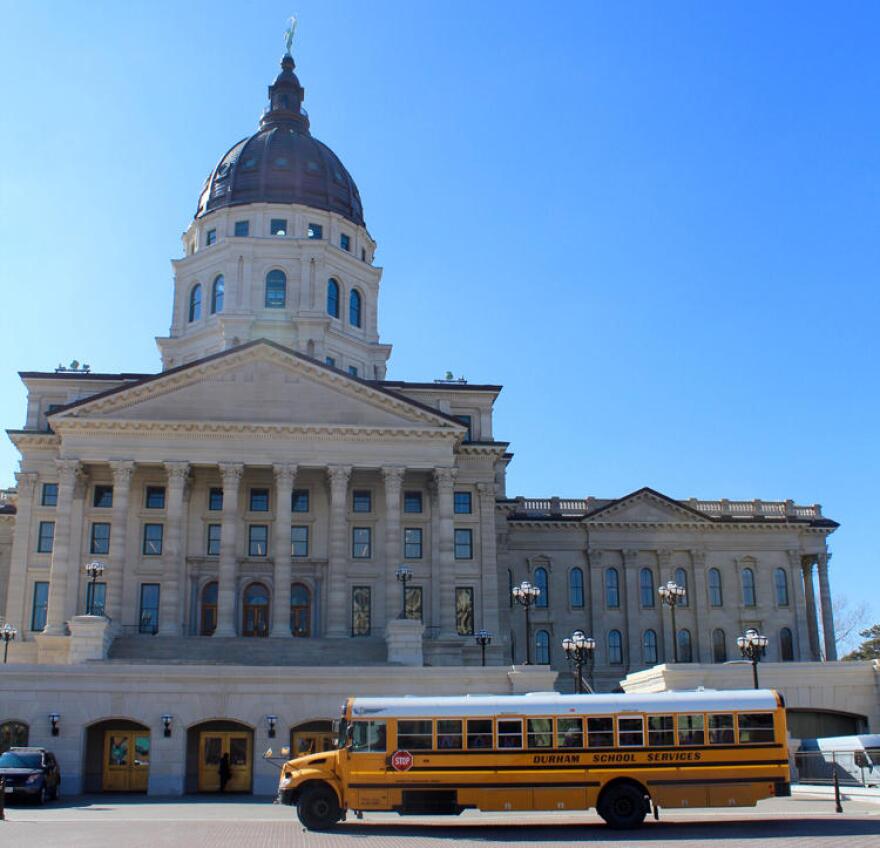The Senate’s potential new formula for funding Kansas schools is based on spending at 41 districts where — according to a recent statistical analysis — students are doing well academically relative to local poverty rates.
The Kansas Legislative Research Department performed the calculations last month at the request of Senate Majority Leader Jim Denning, and the bill based on it would inject around $230 million into K-12 school districts over the next two years.
That’s hundreds of millions of dollars short of what some public education advocates argue is needed to satisfy a Kansas Supreme Court ruling that found existing K-12 funding levels for the state’s 286 school districts unconstitutional. But Denning, an Overland Park Republican, hopes the four-page research memo will help the state withstand courtroom attacks by demonstrating that lawmakers based their dollar figures on sound reasoning.
Download the May 2017 legislative research memo on school funding
“They talk about showing your work,” Denning said of the state Supreme Court’s March ruling, in which the justices ordered Kansas to fix K-12 funding by the end of June. “So they want to actually see your source documents, how you arrived at any base aid and formula.”
A legislative researcher graphed Kansas school districts according to their graduation rates and standardized test scores, and isolated 41 with notable outcomes relative to the percentage of children they serve from low-income families.
Research shows a correlation between poverty rates and academic outcomes. The Senate’s bill relies on spending levels at the 41 districts to calculate how much the state should put into the pot for its K-12 education system as a whole.
Mark Tallman, a lobbyist for the Kansas Association of School Boards, disagrees that lawmakers should ground the formula in this analysis.
“This is useful information,” Tallman said, but added, “We do question whether this alone should be the factor that would be used.”
Meanwhile, two academics who study school finance took issue this week with the memo, but for different reasons.
Eric Hanushek, a senior fellow at Stanford University’s Hoover Institution who testified for the state in the ongoing Gannon v. Kansas lawsuit, said the Legislature faces a difficult legal reality: the need to show the court it is putting enough money into schools, when there is no way to prove it.
“We don’t have a way to do those calculations. Period,” he said. “We don’t have that.”
Figuring out how much money schools with desirable outcomes spend in the course of educating children doesn’t mean, Hanushek said, that those spending levels would boost achievement elsewhere. Instead, he said, policymakers can move the academic needle by giving teachers and schools incentives. That can mean, for example, basing teacher pay on performance instead of set pay scales.
Bruce Baker, a school finance professor at Rutgers University who also testified in the ongoing school finance lawsuit — but for the alliance of school districts suing the state — is also skeptical of the recent legislative research memo. He has concerns about this type of analysis, as well as how it figured spending among the 41 districts.
Baker suggested looking back at approaches used in more detailed work that Kansas legislative auditors published in 2006.
“It’s actually more methodologically appropriate,” he said of the decade-old audit that he described as “far more refined.”
The Legislature — which back then faced a school finance lawsuit similar to today’s — ordered research in 2005, and Legislative Post Audit in 2006 released a 340-page document into the cost of K-12 education. Auditors re-released an abridged version in 2015, saying the information remained largely relevant despite the time lapse.
Calculations at the time of the original publication pointed to a potential state funding increase for the following school year of more than $300 million or $400 million.
Denning signaled this week he is confident the Senate’s bill is adequate.
“This is based on actual outcomes, data, statistical analysis,” he said, adding that it reflects school districts of a variety of sizes and demographics. “It was all mathematically driven.”
The Senate’s proposal to inject $234 million more into schools drew the backing of 23 of 40 senators in a final vote Wednesday. Senators will next need to reach an agreement with their colleagues in the House, which has proposed about $50 million more in its bill.
The court has the power to send lawmakers back to the drawing board this summer if justices find the legislation falls short of providing for suitable public education in Kansas — an obligation that is written into the state’s constitution.
Celia Llopis-Jepsen is a reporter for the Kansas News Service, a collaboration of KMUW, Kansas Public Radio and KCUR covering health, education and politics. You can reach her on Twitter @Celia_LJ.





